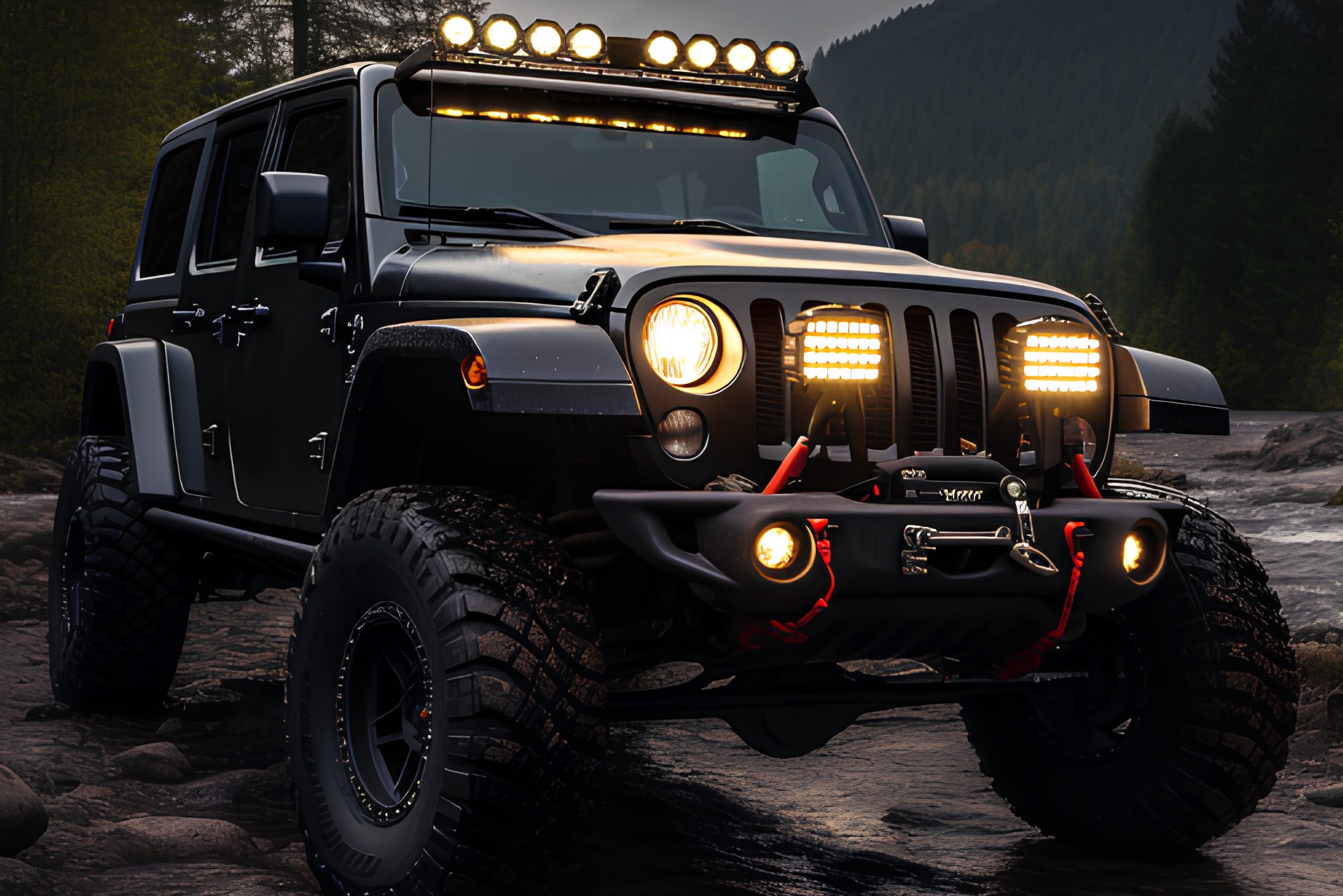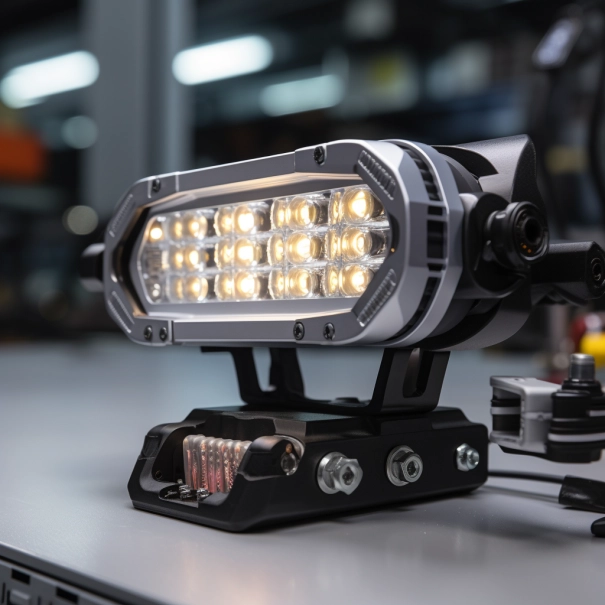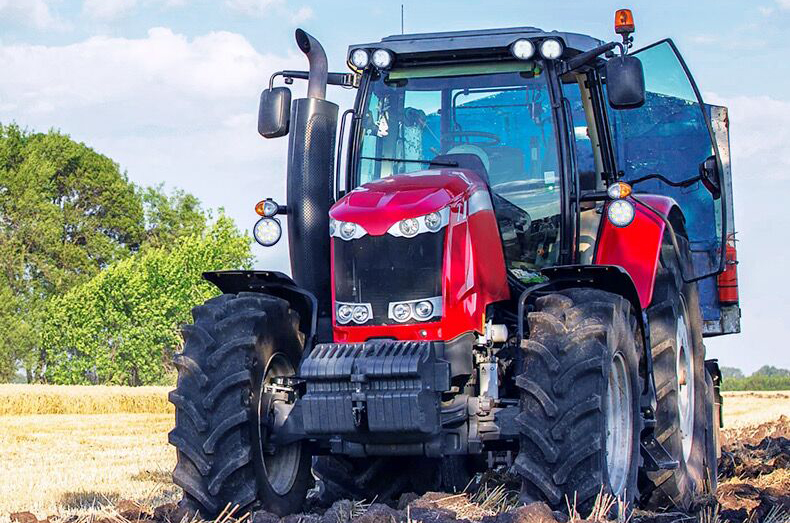LED work lights have changed the game for a lot of industries. They’re efficient, durable, and versatile. Knowing the parts of these lights is important when you’re trying to pick the right one for you. In this article, we’re going to look at the main parts of LED work lights, including LED chips, lens covers, aluminum housings, wiring, and more.
LED Chips
LED chips are the most important part of LED work lights. They’re the things that make the light. These little semiconductor devices have a lot of advantages over traditional lighting sources. They’re energy efficient, they last a long time, and they’re good for the environment. There are a bunch of different LED chips out there, but some of the most common ones are made by Cree, Bridgelux, Epistar, and Osram.
| Brand | Color Temperature | Luminous Output (Lumens) | Lifespan (Hours) | Ideal Applications |
|---|---|---|---|---|
| Cree | 2700K – 6500K | 80 – 200 lm/W | Up to 100,000 | High-end lighting, professional and automotive lighting |
| Bridgelux | 2700K – 6500K | 70- 160 lm/W | Up to 50,000 | Commercial and residential lighting, outdoor applications |
| Epistar | 2700K – 6500K | 70 – 160 lm/W | Up to 50,000 | Consumer electronics, general lighting, signage |
| Osram | 2700K – 6500K | 100 – 200 lm/W | Up to 100,000 | Automotive, industrial, professional lighting solutions |
Cree LEDs come in a wide range of color temperatures, so you can use them for all kinds of lighting. You can use them for warm indoor lighting or bright, cool outdoor lighting. They’re really bright, and Cree is known for making tough stuff. Some of their high-end LEDs last up to 100,000 hours.
Bridgelux focuses on a little bit narrower range of color temperatures. They still cover most of the typical lighting needs from warm to neutral white. Bridgelux LEDs are known for being really bright and cost-effective. They last a decent amount of time, which is good for most commercial and residential needs.
Epistar has a wide range of color temperatures, just like Cree and Osram. That means you can use their chips for a lot of different things. They’re a good balance between cost and performance. They’re not quite as efficient as the other two, but they’re still good for a lot of different applications.
Osram has a wide range of color temperatures, just like Cree and Epistar. They’re really bright. They’re really tough. They’re made for heavy-duty applications like cars and factories where you need them to last a long time.

Lens Covers
Lens covers are important because they protect the LED chips from dust, moisture, and getting hit, and they also help control where the light goes. There are three main materials that people use for lens covers: Polycarbonate (PC), Poly(methyl methacrylate) (PMMA, also known as acrylic), and Polystyrene (PS). Each material has its own advantages and disadvantages, which can affect whether you want to use it for a specific application.
| Material | Advantages | Disadvantages | Best Used For |
|---|---|---|---|
| PC (Polycarbonate) | – Very high impact resistance – High heat tolerance – Good clarity and light transmission | – Higher cost than PS and PMMA – Can yellow over time when exposed to UV light | Situations requiring high durability and resistance to impact, such as in industrial environments or outdoor lighting |
| PMMA (Acrylic) | – Excellent clarity and light transmission – UV resistance (does not yellow) – More scratch-resistant than PS | – Less impact resistant than PC – Can crack or shatter under stress | Indoor applications where clarity and aesthetics are important, such as in retail or residential settings |
| PS (Polystyrene) | – Cost-effective – Lightweight – Easy to mold and shape | – Low impact resistance (brittle) – Low heat resistance – Prone to yellowing and degradation under UV exposure | Economical applications where cost is a major factor and durability under harsh conditions is not critical |
Detailed Insights
PC (Polycarbonate): Polycarbonate is really tough. You can hit it with a hammer and it won’t break. It can also handle high temperatures without melting. That makes it great for situations where you need something to protect the light from getting hit or from being in a really hot environment. The only downside is that it can turn yellow when it’s exposed to the sun. So, if you’re going to use it outside, you might need to put something on it to protect it from the sun.
PMMA (Acrylic): PMMA is really clear, and it doesn’t turn yellow as fast as polycarbonate. It’s also harder to scratch, which is good because you want to be able to see through the lens. The only downside is that it’s not as tough as polycarbonate, so you might not want to use it in a situation where you’re going to hit it or something.
PS (Polystyrene): Polystyrene is the cheapest option. If you’re trying to save money, you might want to use polystyrene. It’s also really easy to work with when you’re making stuff. The only problem is that it doesn’t handle getting hit or being in a hot place very well. It also turns yellow when it’s in the sun. So, you probably don’t want to use it in a situation where you’re going to hit it or it’s going to be outside.
Aluminum Housings
Aluminum housings are used in a lot of LED work lights because they’re really good at getting rid of heat, they’re tough, and they don’t rust. The difference between a thick aluminum housing and a thin aluminum housing can make a big difference in how well the light works and what you can use it for. Here’s a quick rundown of the differences between thick and thin aluminum housings and the different thicknesses you can get:
Differences Between Thick and Thin Aluminum Housings
1. Thermal Management:
- Thick Aluminum Housings: These provide better heat dissipation due to the increased mass and surface area. Efficient heat dissipation is crucial for maintaining the LED’s performance and longevity, as high temperatures can degrade the LED chip faster.
- Thin Aluminum Housings: These don’t get rid of heat as well as thick aluminum housings because they don’t have as much metal or surface area. They’re lighter, though, which is good if you’re going to be carrying the light around. They’re also fine if you’re not going to have the light on for a really long time or if you don’t need it to be really bright.
2. Durability and Structural Integrity
- Thick Aluminum Housings: They’re tough and rigid. That’s why they’re perfect for LED work lights used in rough environments where they’re going to get banged around, shaken up, and exposed to the elements.
- Thin Aluminum Housings: They’re not as tough, but they’re lighter, which is good for portable or handheld LED lights because it makes them easier to carry around and reduces user fatigue.
3. Cost and Material Usage
- Thick Aluminum Housings: More material use leads to higher costs, both in terms of raw materials and shipping due to increased weight.
- Thin Aluminum Housings: They’re cheaper because you’re using less material, and they’re cheaper to ship because they weigh less. That makes them great for budget-conscious projects.
Manufacturers might choose a thickness based on the specific performance requirements and operating conditions of the LED light. Higher-performance lights, especially those used in demanding industrial applications or in outdoor environments with harsh weather conditions, will usually go with thicker aluminum housings to make sure they last and work well.
Common Thicknesses of Aluminum Housings
The thickness of aluminum housings can vary based on the manufacturer and the specific applications of the LED light. Common thicknesses include:
- 20mm to 35mm: Typically used for general lighting in safe environments where large heat dissipation is not critical.
- 35mm to 50mm: A good balance for applications that need reasonable durability and moderate heat dissipation.
- 50mm to 70mm: Used for high-performance LED work lights that require excellent heat management and high durability, often seen in industrial or high-stress environments.

Wiring
Wiring in LED work lights connects the LED chips to the power source and enables control functions like dimming and color changing. Good wiring is important for electrical safety and reliable performance. The type and number of wires can vary based on the features and complexity of the lighting system. Here’s a breakdown of common wiring configurations and their general functions in LED work lights:
Types of Wiring Configurations
1. Two-Wire Configuration
- Functionality: This is the simplest form of wiring, consisting of one positive (+) and one negative (-) wire. It’s used for basic on/off functionality without any additional features.
- Common Use: Two-wire systems are typically found in straightforward LED applications where dimming, color change, or other functionalities are not required.

2. Three-Wire Configuration
- Functionality: In addition to the standard positive and negative wires, a third wire is often used for grounding or for a control signal (like dimming). In some cases, the third wire may serve to carry a neutral charge, depending on the electrical requirements of the system.
- Common Use: Three-wire systems are common in residential and commercial settings where additional safety or simple control features like basic dimming are needed.

3. Five-Wire Configuration
- Functionality: A more complex setup, typically including two wires for powering (positive and negative), one for grounding, and two additional wires for advanced controls such as dimming, color changing, or other programmable features. The extra wires can be used for data transmission in intelligent lighting systems that communicate with other devices.
- Common Use: Five-wire systems are used in advanced LED work lights that offer features like programmable scenes, color changing (RGB), or integration with smart home systems.

The choice of wiring in an LED work light impacts not only the installation process but also the light’s capabilities and compatibility with different control systems. For any installation, it’s important to consult detailed product documentation and ensure compliance with local electrical codes to safely and effectively set up and use LED lighting systems.
Conclusion
In conclusion, the effectiveness and performance of LED work lights depend significantly on the careful selection and integration of their key components: LED chips, lens covers, aluminum housings, and wiring. Each component plays a vital role in the overall functionality, durability, and efficiency of the lighting system.
The optimal design and assembly of these components ensure that LED work lights meet specific needs, perform reliably, and last long. Whether for commercial, residential, or industrial use, understanding the role and quality of each component can significantly influence the selection and application of LED lighting solutions, leading to better outcomes and greater satisfaction.





